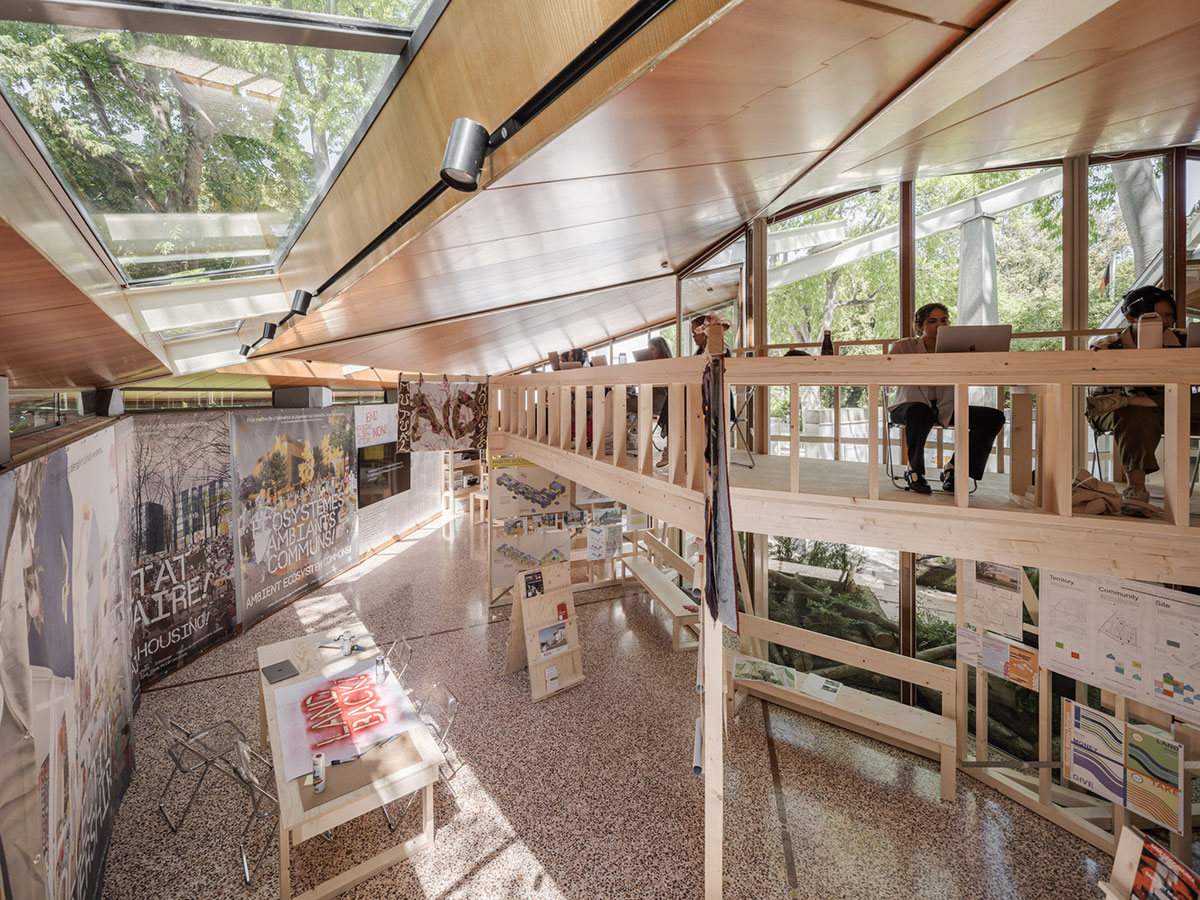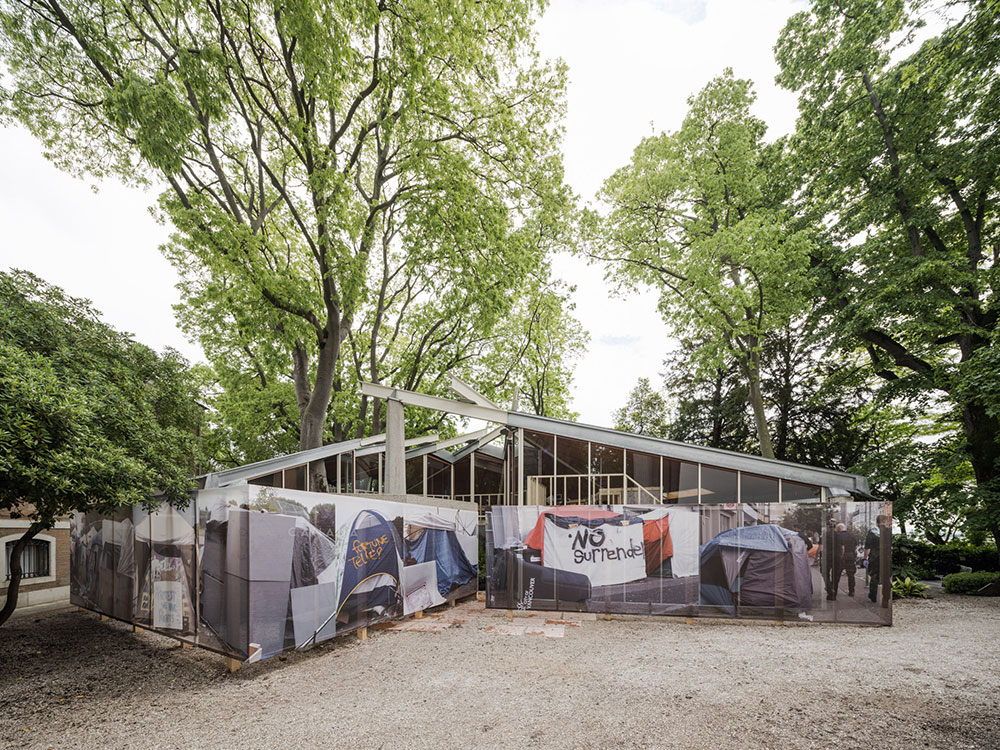At the Venice Biennale this year, a group of architects representing Canada showed up with an unconventional message for a prestigious, international exhibition of culture: there is something wrong with the country’s housing.
“We wanted to alarm the government on the international stage,” said Matthew Soules, an architect and associate professor at the University of British Columbia’s school of architecture and landscape architecture. He was a member of the Canadian team at the biennale.
“A lot of people who come to the pavilion are surprised to learn [about] Canada’s housing challenges. Their impression of Canada is a well-functioning social democracy. We wanted to disrupt this impression.”
There are banners that wrap around the Canadian pavilion, the kind that urbanites are used to seeing at construction sites heralding the coming of condos. But instead of images of sleek towers and residents laughing happily in their new homes, the architects have chosen images of tents in Vancouver’s low-income Downtown Eastside. The images come from the recent documentary Stop the Sweeps, on how people sleeping rough in tents are often forcibly decamped and displaced by police and city workers.
The Canadian team, called Architects Against Housing Alienation, have named their exhibit Not For Sale!, focusing on how homes are increasingly financialized as assets. The team proposes housing solutions that are more equitable rather than driven by profit. They were chosen to represent the country by the Canada Council for the Arts. Canada has participated in the biannual biennale since 1952.
“The word ‘affordability’ is used a lot,” said Soules, whose team settled on “housing alienation” as a new way to talk about what’s happening with the market. “It’s this feeling of separation and being outside and uncomfortably distant.”
The word carries many meanings. One is that “alienability” means the ability for a piece of property to be sold. The team points out that housing is increasingly “designed and configured” to be easily exchanged in the market. Another is a nod to Karl Marx’s theory of alienation, in which workers have a foreign relationship to the products of their own labour, as people in Canada have an increasingly foreign relationship to their homes.
“We think that all Canadians, whether they’re poor or middle-class or very wealthy, experience housing alienation,” said Soules. “An unhoused person living in a tent in the Downtown Eastside is feeling this in a very direct way. But someone who lives in a very nice condo in a mid-rise in Kitsilano is feeling it also, with how their emotional relationship to their housing is as a financial storage of wealth.... Because we treat housing so intensely this way — to build wealth, to move ahead financially, to achieve financial security in retirement — there is a disconnect.”
What’s needed, he adds, is a paradigm shift.
“We think that if we build more housing within the current structure, it’s not going to get us out of the problem. We have to build a load of housing in a new way.”
A manifesto versus the market
The team worked with architects and housing advocates across Canada to come up with a 10-point manifesto — all of which is achievable, they say.
At the top of the list is “Land Back!” (exclamation mark included) calling for lands deemed “surplus” by government agencies, such as those held by the military and the RCMP, to lands claimed by the crown within the traditional territories of Indigenous peoples, to be identified. That land should be returned to their respective Indigenous communities as part of a trust and used for the betterment of their people, says the team.
“Land is a wealth creation tool. That’s how it’s been viewed economically, but First Nations have been shut out of that,” said team member architect Patrick Stewart, who is a member of the Nisga’a Nation.
Stewart notes that those lands deemed a surplus by federal agencies are often developed as residential property.
“Next thing you know, you’ve got thousands of units for sale,” he said. “Who’s benefiting? Not the First Nations.”
Stewart gives an example from the 2000s of a former military base in Chilliwack, a 153-acre site, that was turned into a development called Garrison Crossing with 1,800 homes.
Another point on the manifesto urges governments not to sell public land, which should be used for public good, to for-profit companies and develop it into housing.
As for people sleeping rough on the street or in tent cities, many of whom are avoiding shelters, the manifesto asks cities to set aside vacant properties for transitional housing. One suggestion is tiny homes in parking lots with shared facilities, which has been implemented in Waterloo and Toronto.
There’s a gentrification tax on the manifesto, calling for policy that skims some of the value that big landlords accrue from their properties as a neighbourhood becomes desirable.
The manifesto also encourages governments to open opportunities for more communal forms of housing, from co-ops to co-housing.

Architect as activist
In fitting with the biennale’s theme of “The Laboratory of the Future,” the Canadian pavilion, which was built in 1957 and inspired by the design of a teepee, has transformed into just that. Architecture students from the University of British Columbia and the University of Waterloo are working on projects based on the exhibit as the biennale’s 300,000 visitors stop by.
There are images of a tent city on the outside and the inside looks a bit like one too, with banners and stencilled posters that evoke a handmade, grassroots protest as part of the exhibit.
Solutions showcased as part of the manifesto include Toronto Tiny Shelters, insulated shelters that one carpenter built over 100 of for unhoused people during the pandemic. There’s also the Parkdale Neighbourhood Land Trust from the same city, which is buying up apartment buildings to keep them out of the hands of speculators.
The exhibit features a video history of Canadian housing, starting from pre-contact Indigenous housing to the present-day images of homelessness in Vancouver.
When the biennale ends on Nov. 26, the Canadian team hopes to bring their ideas back home to be implemented.
“One of our commitments is to change how architects think of themselves,” said Soules. “Some architects say, we are hired by the developer and we do what they want as a kind of service industry.... They have a voice and can argue for change within the profession.” ![]()
Read more: Rights + Justice, Housing

















Tyee Commenting Guidelines
Comments that violate guidelines risk being deleted, and violations may result in a temporary or permanent user ban. Maintain the spirit of good conversation to stay in the discussion and be patient with moderators. Comments are reviewed regularly but not in real time.
Do:
Do not: